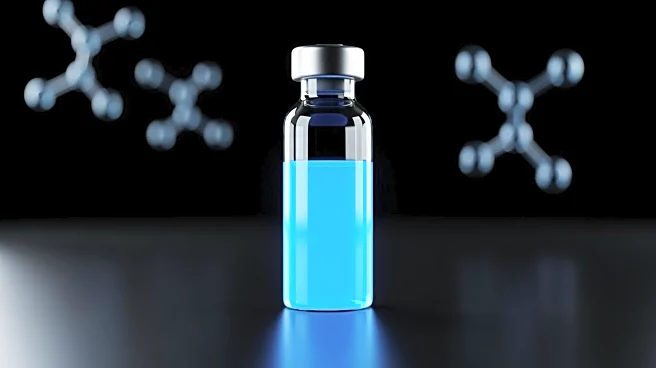What's Happening?
The Food and Drug Administration (FDA) has announced the addition of a boxed warning to Sarepta Therapeutics' gene therapy, Elevidys, following its association with two patient deaths. This therapy, used
for treating Duchenne’s muscular dystrophy, will now carry the most serious type of warning due to the risk of potentially fatal liver failure. The FDA's decision comes after the deaths of two teenage boys, reported in March and June, which initially led to a temporary halt in the drug's distribution. However, the FDA reversed this decision after receiving pushback from patient families and libertarian activists. Elevidys, the first gene therapy approved in the U.S. for Duchenne’s muscular dystrophy, will also see its use limited to patients aged four and older who can still walk. Additional precautions include weekly liver function monitoring for the first three months of treatment.
Why It's Important?
The FDA's decision to impose a boxed warning on Elevidys highlights the ongoing challenges in balancing patient safety with the availability of innovative treatments. Duchenne’s muscular dystrophy is a severe condition affecting boys and young men, and Elevidys represents a significant advancement in treatment options. However, the associated risks underscore the need for stringent safety measures. The warning and usage limitations could impact Sarepta Therapeutics financially, as Elevidys is a key product for the company. Despite this, Sarepta's stock rose by 7.7% following the FDA's announcement, indicating investor confidence in the company's future prospects. The situation also reflects broader debates on regulatory oversight and patient access to potentially life-saving therapies.
What's Next?
Sarepta Therapeutics will need to navigate the implications of the FDA's warning and adjust its strategies accordingly. The company may focus on enhancing safety protocols and communicating these changes to healthcare providers and patients. Additionally, the FDA's decision could prompt further scrutiny of gene therapies and their safety profiles, potentially influencing future regulatory actions. Stakeholders, including patient advocacy groups and healthcare professionals, will likely continue to engage in discussions about the balance between innovation and safety in medical treatments.












